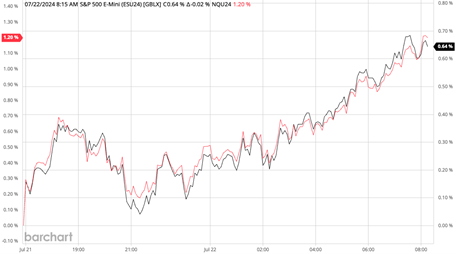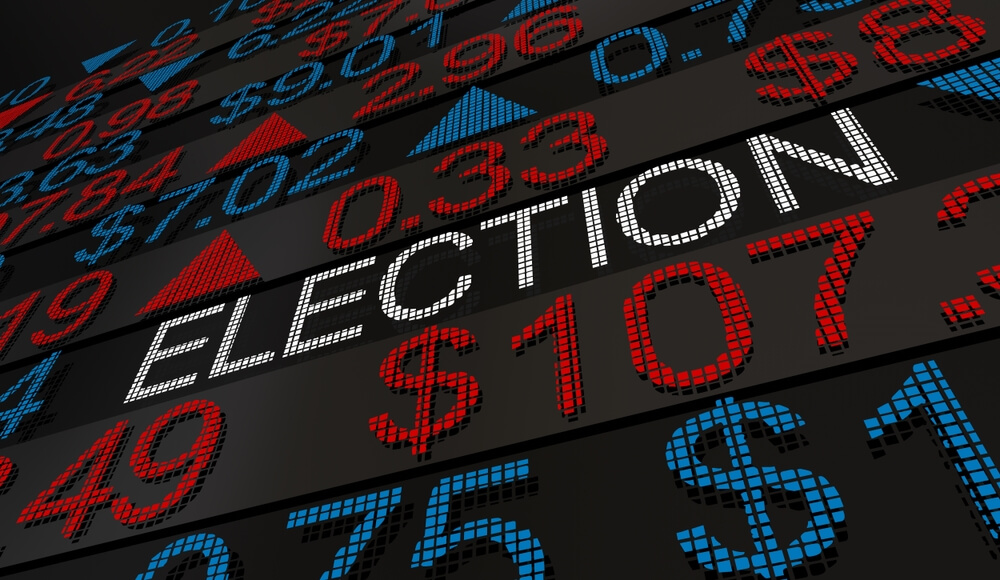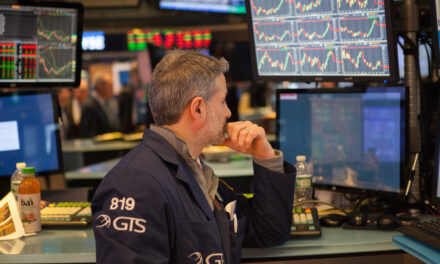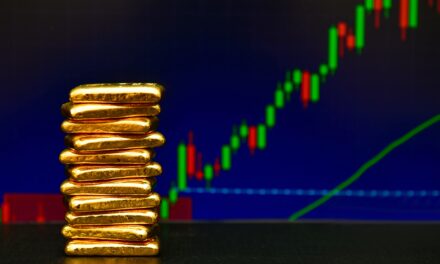1968 was one of the most divisive years in American history.
The nation was locked in an unpopular war. The economy was wracked with inflation. And a recession had just triggered one of the largest speculative runs on gold in history.
And that year’s presidential election only served to highlight just how deeply divided the country was.
In March, President Lyndon B. Johnson announced to the world that, despite being the incumbent, he would not seek reelection to the White House.
This set the stage for a combative nomination process for Democrats and three nights in Chicago that the world would never forget.
Democrats descended upon the Convention, eager to crown their next candidate, who would replace Johnson at the top of the ticket.
But the real news was happening right outside Chicago’s International Amphitheater that night…
Out in the street, thousands of protestors clashed with police to demonstrate against America’s involvement in the Vietnam War.
Meanwhile — just a few feet away — America’s Democratic leadership was locked in their own battle to determine who their presidential nominee would be.
That’s right…
If you feel a sneaking suspicion that history is repeating itself today … then you’re not far off.
Today, we live in a similarly divisive political environment.
So it’s possible that a closer investigation of that fateful 1968 election (and its aftermath) could give us some clues about the future of America’s economy and today’s stock market.
Let’s dive in…
A Poor Start to 1968 … Until Johnson’s Speech
The S&P 500 started 1968 off flat, bouncing between readings of 95 and 96.
Then, on January 22, the index started to move down, closing just above 94 … and it didn’t stop declining until March.
In total, the index dropped 9.3% from its early high in January to its bottom at the beginning of March.
Then it hovered just below 90 points until Johnson gave his famous televised speech turning down the opportunity to represent the Democratic Party in the presidential race:
Johnson delivered his speech on Sunday, March 31. The following Monday, the S&P 500 jumped 2.5%.
From the day after Johnson’s speech to the end of 1968, the S&P 500 gained 12.3%.
Note: The index hit a top of 108.37 just weeks after Republican Richard Nixon defeated Democratic Vice President Hubert Humphries after a brutal campaign season — a gain of 17.2% from the time Johnson bowed out of the race.
Now, it’s not necessarily fair to attribute the market rebound to Johnson’s removal from the race. Alongside him declining the nomination, he also announced a pause in the bombing of North Vietnam — a deeply unpopular policy.
Fast Forward: How the Market Responded to Biden’s Exit
Jumping back to the present…
Faced with pressure from high-ranking Democrats, President Joe Biden decided last Sunday to withdraw from the presidential race.
From Sunday night — after the announcement was made — to before the market opened Monday morning, the market responded in a similar fashion to when Johnson stepped aside in 1968:
S&P 500 and Nasdaq Post Premarket Gains After Biden’s Announcement

Nasdaq futures posted a 1.2% gain, while S&P 500 futures were up 0.6% in the hours after Biden removed himself from the presidential race.
One big difference is that, unlike 1968, the S&P 500 has been on an incredible run since the start of the year … sans a dip in April.
While the market reacted somewhat similarly to Johnson and Biden’s announcements, the setup leading to them was very different.
What This Tells Us About the Months Ahead
Like 1968, this year has produced questions about inflation and a sitting president taking himself out of the race.
It also leads to a potentially chaotic Democrat National Convention in … of all places … Chicago, where Democrats could see a battle for their nomination (although Vice President Kamala Harris looks to have this all but locked up after securing the delegates she needs earlier this week).
We also see political divisiveness similar to what ripped at America during the Vietnam War.
Unfortunately, what happened in 1968 doesn’t give us much insight into what to expect in the market for the rest of the year.
There are too many unanswered questions about the Federal Reserve’s interest rate policy, the movement of the U.S. economy, and the outcome of the presidential race on November 5.
As a smart investor, these recent changes should give you some pause about your portfolio and how you manage it.
We’re shy of 100 days from Election Day, and a lot can happen between now and then. Likewise, sentiments can shift even after the election is decided.
That’s why we at Money & Markets emphasize “adapting” to the ever-changing market so much.
And Chief Investment Strategist Adam O’Dell is ready to show you how to do precisely that.
Until next time…
Safe trading,

Matt Clark, CMSA®
Chief Research Analyst, Money & Markets





